- This forum has 1 topic, and was last updated 4 years ago by .
Viewing topic 1 (of 1 total)
-
- Topic
- Voices
- Last Post
Viewing topic 1 (of 1 total)
- You must be logged in to create new topics.
An online horse care and equine health encyclopedia.
Welcome Guest! Do you need a reliable equine reference you could use at home, at the barn, even on the trail? Still have questions? How about access to a experienced equine veterinarian? You are 60 seconds away from access!
Come Join Us we have several options and the first month is FREE!
By the way, when you join not only is the whole site yours to enjoy but these ads disappear!
The Life Cycle of Bots |
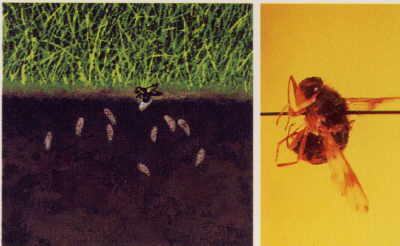
In the late winter or early spring, larvae are released from the stomach and pass onto pasture in the feces. They burrow into the ground and pupate. Adults emerge in three to 10 weeks, depending on temperature. |
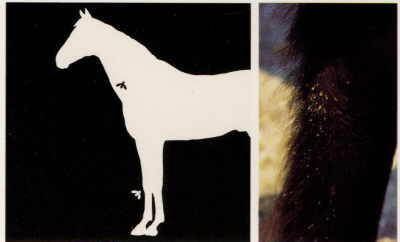
Egg laying begins in early summer. Eggs of the three different species differ in color and placement. G. intestinalis lays pale yellow eggs on the forelegs and shoulders. Moisture and friction from the horse licking itself cause the eggs to hatch in about seven days. |
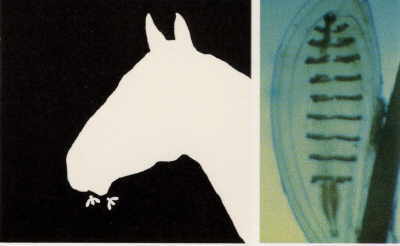
G. nasalis lays its yellow eggs around the chin and throat. These eggs hatch in about a week without stimulation. G. haemnhoidaiis lays only about 150 black eggs around the lips of the horse. These eggs hatch in 2 to 3 days. |
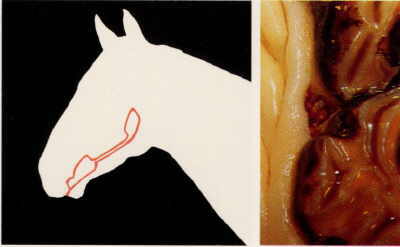
After hatching, G. intestinalis larvae are licked into the mouth. G. nasalisani G. haemorrhoidalis burrow under the skin to the mouth. All three species of larvae wander through the mucosa of the mouth for about a month before migrating to the stomach for overwintering. |
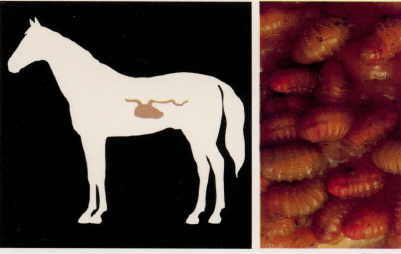
Larvae overwinter attached to mucosa of the stomach. They can be so numerous that stomach tissue cannot be seen. |
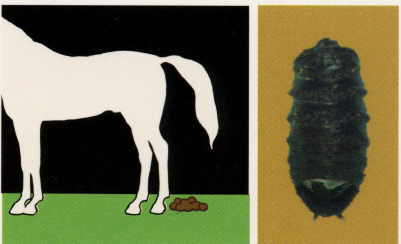
With warmer weather, larvae are released in the feces to continue the life cycle. |